Bologna FC’s strategy for the 2023/24 season embodies a dynamic blend of flexibility and cohesive teamwork, shaped by the innovative philosophy of their coaching staff. Throughout the campaign, Bologna FC has demonstrated a nuanced approach to player deployment, emphasizing functional roles that optimize performance within specific areas of the field rather than rigid positional constraints. This adaptive strategy not only enhances their overall effectiveness but also showcases their tactical sophistication in maintaining strategic balance across different phases of play.
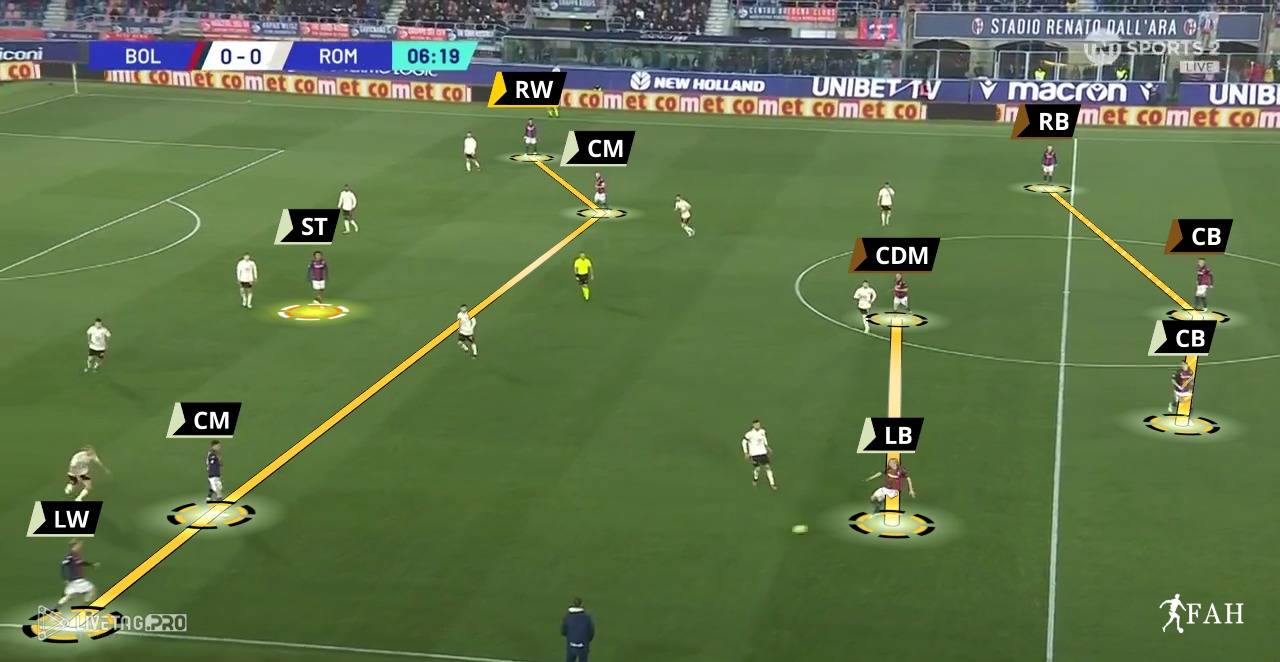
Initially deploying with a traditional back four, Bologna FC transitions seamlessly into a proactive 3-2-4-1 formation during possession phases. This tactical adjustment sees center-backs or full-backs supporting the central defensive midfielder, thereby expanding passing options and reinforcing central presence for counter-pressing during defensive transitions. Meanwhile, the central midfielders exhibit complementary movements: one provides a new passing outlet while the other exploits space behind the opposition’s defensive lines, facilitating dynamic movements in attack. Width is crucially provided by the wingers, who stretch play and create additional attacking dimensions.
Bologna FC’s coordination among players is pivotal, encouraging proactive movement to exploit vacated spaces. This includes strategic movements such as creating passing lanes and exploiting gaps generated by teammates’ actions, showcasing their tactical awareness and ability to capitalize on positional advantages.
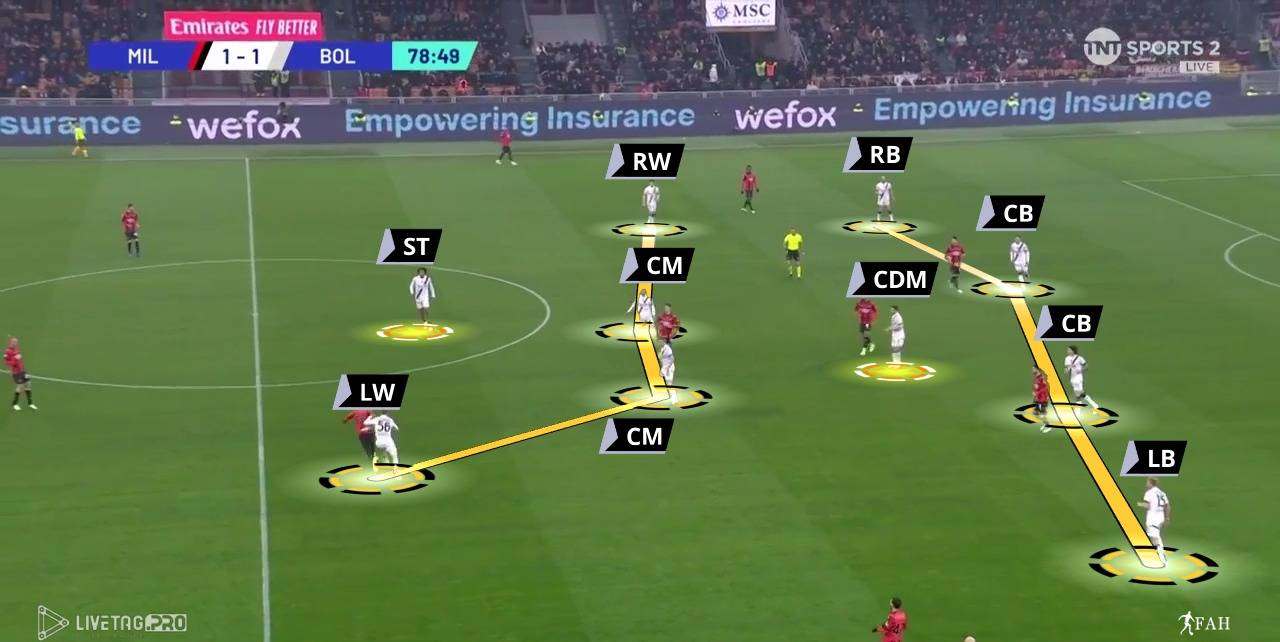
In defense, Bologna FC’s primary objective is aggressive ball pressure to disrupt opponent buildup and regain possession quickly. Should the initial press not yield results, they efficiently transition to a structured 4-1-4-1 formation. This defensive setup features two compact lines of four, employing a proactive man-marking strategy with fluid positional exchanges. The defensive midfielder plays a pivotal role, positioning themselves between these lines to either press their assigned opponent or drop deeper to cover spaces left by advancing defenders
Overall, Bologna FC’s tactical evolution underscores their ability to navigate the complexities of modern football with strategic depth and adaptive flexibility. This analysis aims to provide insights into the team’s game constants adopted across various phases of play.
Build Up
Bologna changes its shape from 4+2 to 3+2. To bypass the opponent’s first line of pressure, they look for the ST who drops deep to link up with teammates. The two CMs make opposite movements, offering new passing lanes and creating space for the striker. The CB steps out of the line to support the attack and moves into the spaces to break the opponent’s pressing. The central space can be exploited thanks to the width provided by the wingers.
Middle and Final Third
Exploiting free space is a key element in Bologna’s attacking strategy. This allows them to advance at least 6/7 players into the offensive phase, preventing clear defensive references and creating multiple passing lanes. The penalty area is attacked by at least 4 players using triangulations or well-executed crosses.
First Pressing
In their first pressing, they adopt a 4-1-4-1 formation employing man-to-man marking. ST is tasked with triggering the press, while the other players mark their respective opponents. CDM covers the space between the two line or marks the opponent who positions themselves between the lines.
Defensive Phase
Man marking remains a priority for Bologna. They use two compact lines, allowing players to quickly apply pressure on the ball carrier and facilitate marking switches. The entire team participates in the defensive phase, with CDM dropping back into the defensive line if a CB steps out to mark.
Offensive Transitions
ST is the primary reference point to initiate the counterattack, followed by 3/4 teammates. One player positions wide to stretch the defense, while the others make central runs to exploit the created space.
Defensive Transitions
This is Bologna’s primary pressing phase. The aim is to win the ball back as quickly as possible with multiple players aggressively closing down the ball carrier, cutting off passing options and forcing errors. This coordinated effort disrupts the opponent’s build-up play and regains possession high up the pitch.
Team Stats
Offensive Stats:

According to the top 5 passing rate chart, Bologna ranks third with a passing rate of 15.7. This high passing rate contributes to their impressive ball possession statistic, where they are second in Serie A with 58.1% possession. This significant ball control aligns with Bologna’s strategy of changing their shape from 4+2 to 3+2 to bypass the opponent’s first line of pressure. By relying on the striker who drops deep to link up with teammates and with the central midfielders making opposite movements, Bologna creates new passing lanes and space, allowing the team to circulate the ball while waiting to exploit the decisive free space.
Further emphasizing their prowess in ball distribution, Bologna is third in Serie A for completed passes with 19.125, boasting an accuracy rate of 85%. A notable aspect of these passes is their preference for short, precise passes over long ones, as illustrated by the pie chart of passing distances. This preference for short passes is evident in their strategic use of triangulations and well-executed short passes, especially when advancing into the middle and final thirds of the pitch. Bologna’s ability to control the game is further highlighted by their ranking as the second-highest team for touches, with 26.519 touches overall. They lead the league in touches in the defensive third and are second in the midfield third.
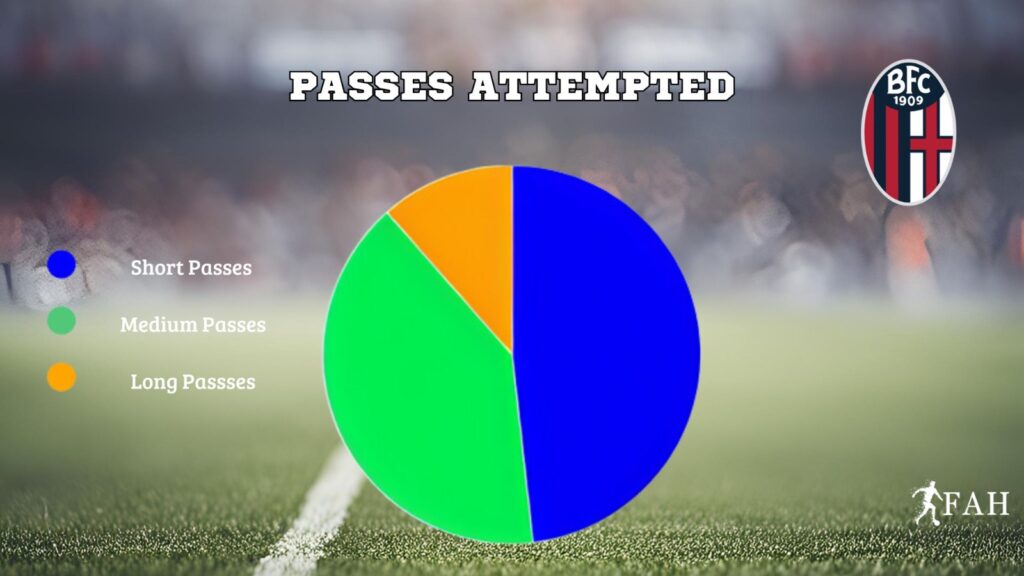
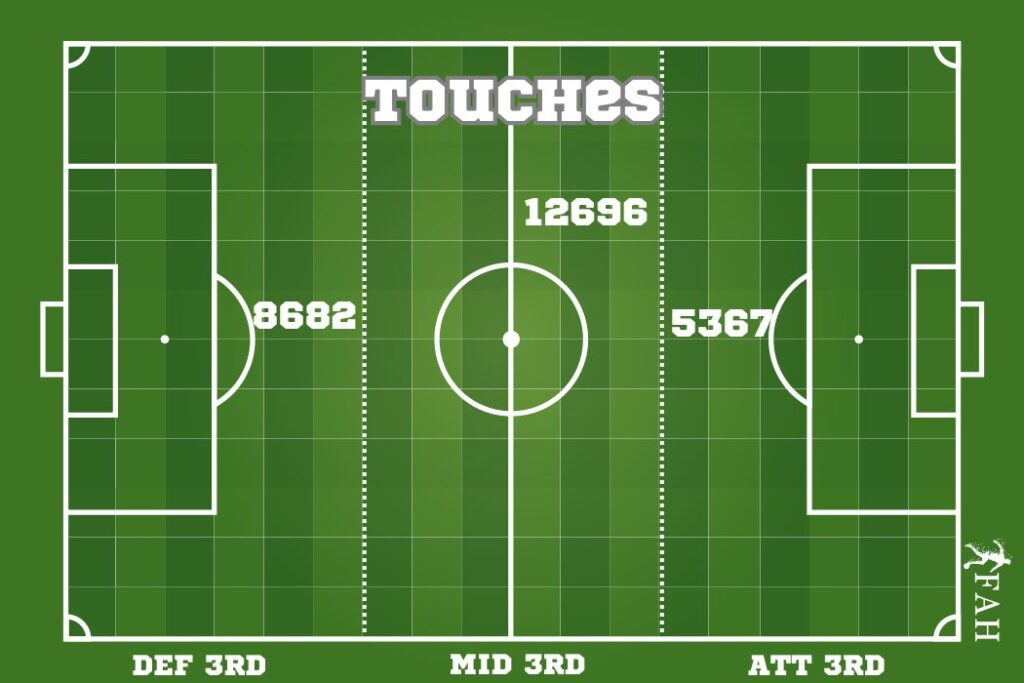
This indicates their emphasis on maintaining possession and building play from the back. Such touches are crucial for their build-up play, allowing them to control the tempo and seamlessly transition from defense to attack. Additionally, by advancing 6/7 players into the offensive phase, they stretch the opposition and create multiple passing lanes, making it difficult for opponents to establish clear defensive references. In conclusion, Bologna’s effectiveness in the final third is particularly noteworthy. They rank fifth in the league with 1.267 passes in this crucial area and lead in carries with 15.952. This blend of high pass completion and dynamic ball movement enables Bologna to consistently penetrate defensive lines and create scoring opportunities. This coordinated strategy effectively maximizes the exploitation of available space, seamlessly aligning with their overarching attacking philosophy.
Defensive Stats:
Bologna has established itself as a formidable defensive unit, ranking as the third team for clean sheets in the league with 17 matches where they successfully kept their opponents from scoring. This achievement is bolstered by their impressive Passes Per Defensive Action (PPDA), where they stand third with a value of 10.05. PPDA measures the number of passes an opponent makes before a defensive action is taken, showcasing Bologna’s aggressive and effective pressing strategy. In their defensive phase, they adopt a 4-1-4-1 formation with the striker initiating the press and others following suit, effectively stifling the opposition’s build-up play.
This defensive discipline is further highlighted by their league-leading total of 633 tackles, with a significant portion occurring in the middle third. This aggressive midfield presence is crucial in disrupting the opponent’s play and aligns with Bologna’s strategy of maintaining a compact shape, as mentioned in the analysis.
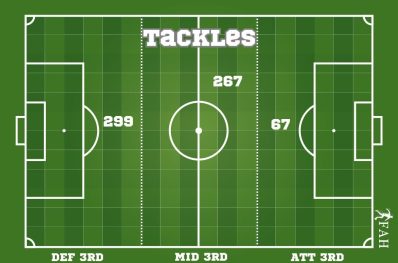

Furthermore, Bologna’s challenge intensity reflects their relentless defensive work rate. They are tied with Fiorentina at the top with a score of 6.1. This intensity is evident during their defensive transitions, where multiple players quickly close down the ball carrier, forcing errors and disrupting the opponent’s rhythm.
Adding to their defensive prowess, Bologna is the second team in the league for blocked passes with 313 blocks and they concede the fewest key passes with just 280. This further supports the analysis of their well-coordinated defensive phase, where the entire team participates actively, and the CDM drops back to cover any gaps left by the central defenders.
These statistics underscore Bologna’s tactical discipline and their ability to implement a high-intensity, effective pressing game, making them one of the most challenging teams to break down in the league.
Player
Let's Get in
Touch
Email Address
support@your domain.com
